Connor was investigating this old scat that he found on a log, or I probably wouldn’t have noticed it. Although the age seems to have deteriorated the form significantly, making it a bit more difficult to tell what sort of animal might have left it, there are really not too many options for what it could have come from. I suppose the first thing to decide is whether it’s a scat at all – as it did occur to me that I should consider whether it might be a cough pellet. In the end, I don’t think it is a cough pellet because it appears to be full of fibrous vegetative matter, and birds that leave cough pellets like this wouldn’t be eating so much vegetation.
Eliminating birds leaves us with mammals. I think we can eliminate the small mammals just due to the size/volume. It seems conceivable that a mink or marten could leave a scat of this size/volume, and certainly anything larger could, though normally we might expect to see a larger pile. Given the paucity of mammal species on Baranof Island, we’re left with mink, marten, river otter, deer, and bear. The presence of so much roughage would seem to make the mustelids unlikely candidates.
The placement of the scat was sort of odd, though unfortunately I didn’t get a picture that showed it well. The picture titled ‘split cedar’ shows the upper part of the small log it was resting on. It’s possible the log received only a partial pile, though it didn’t seem like there was anything super obvious on the ground around it (although I didn’t check for that specifically). It may be that the stuff that ended up on the log has persisted longer.
At this point, if I were forced to guess, I would say deer. Maybe a smaller one that had a somewhat loose (rather than pellet) movement. The color/consistency seems better for deer, and there’s quite a bit of fairly woody looking material (which I wouldn’t really expect to see with bears, and certainly not with mustelids). The presence of so much woody looking material makes me wonder about the age of this, I wouldn’t expect it to be around for months (especially with as much rain as we’ve had this year), but on the other hand it’s my impression deer don’t do too much browsing of woody material when there’s abundant fresh leafy growth.
Questions;
- What do you think produced this scat?
- How old is the scat?
- Is it possible to draw any conclusions from the consistency/length of the fibrous material? (that is, if all we had to go on was the fibrous material, would we be able to tell whether it was a deer or a bear that had chewed it up?)
Please leave a comment with your thoughts or ideas on this mystery.
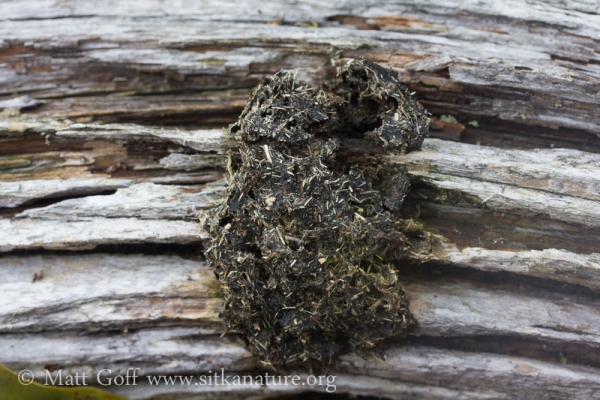
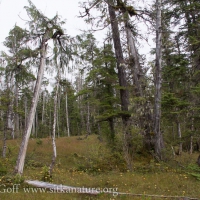
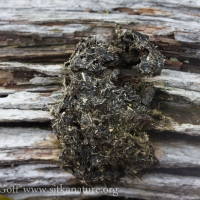
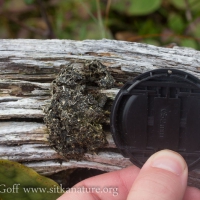
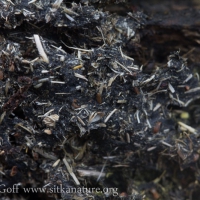
Could you tell what kind of plant matter was in it? It looks like there are some seed hulls in the mix there. I didn’t see anything that made me think it was woody material from the picture, but maybe it seemed so in person.
One thing to think about is how digested the material is. A deer’s system is built for handling plant matter more than the other animals on your list, but with this scat it seems like a lot of it was not digested very thoroughly.
Woody is probably not be the best way to describe the coarser fibrous material, but it seemed more like the stuff that makes up stiff stems which persists into the winter and following year, not breaking down completely (as opposed to leaves and stuff that tend to break down rather quickly). I do agree about seed coats being in there.
Interesting point about the effectiveness of a digestive system in breaking things down – I wonder if a young deer transitioning to a plant-based diet would be less effective in digesting the material. I actually don’t know when deer start eating plants (or if they start eating plants from the time they are born and never are exclusively nursing).